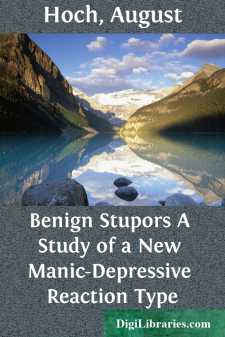Categories
- Antiques & Collectibles 13
- Architecture 36
- Art 48
- Bibles 22
- Biography & Autobiography 813
- Body, Mind & Spirit 142
- Business & Economics 28
- Children's Books 15
- Children's Fiction 12
- Computers 4
- Cooking 94
- Crafts & Hobbies 4
- Drama 346
- Education 46
- Family & Relationships 57
- Fiction 11829
- Games 19
- Gardening 17
- Health & Fitness 34
- History 1377
- House & Home 1
- Humor 147
- Juvenile Fiction 1873
- Juvenile Nonfiction 202
- Language Arts & Disciplines 88
- Law 16
- Literary Collections 686
- Literary Criticism 179
- Mathematics 13
- Medical 41
- Music 40
- Nature 179
- Non-Classifiable 1768
- Performing Arts 7
- Periodicals 1453
- Philosophy 64
- Photography 2
- Poetry 896
- Political Science 203
- Psychology 42
- Reference 154
- Religion 513
- Science 126
- Self-Help 84
- Social Science 81
- Sports & Recreation 34
- Study Aids 3
- Technology & Engineering 59
- Transportation 23
- Travel 463
- True Crime 29
Benign Stupors A Study of a New Manic-Depressive Reaction Type
by: August Hoch
Categories:
Description:
Excerpt
A word should be said as to the origin and history of this book. When the late Dr. Hoch became Director of the Psychiatric Institute of the New York State Hospitals in 1910, he found there an interest in just the kind of psychiatric research which it was his ambition to further. His predecessor, Adolf Meyer, had developed the conception that the psychoses should be looked on as psychobiological reactions rather than rigid nosological entities and had inculcated the habit of scrupulously thorough examination and record of what the patient said and did. Meyer had broken away from the sterile habit of making diagnoses in accordance with the set terms used to label symptoms; and his work and that of his assistants thus led to a collection of valuable material which could serve as a useful starting point for the keen clinical investigation of Hoch. Specifically, attention had already been fixed on the study of the so-called functional psychoses, comprising what are generally termed Dementia Præcox and Manic-Depressive Insanity. An urgent problem in this field was to separate different reaction types in order to discover which were recoverable and which chronic or progressive. In order to understand psychological reactions, interrelation rather than mere coincidence of symptoms must be studied and, to aid in this, free use was made of the fundamental principles of unconscious mentation as exposed in the theories of Freud and his followers.
Almost at the outset it had been discovered that many patients presented clinical pictures that would not fit into existing diagnostic pigeon holes. Dr. George H. Kirby, whose skill and industry had made the most valuable contributions to the archives of the Institute, published in 1913 a brief paper in which he pointed out, not only that many cases with "catatonic" symptoms recovered, but also that clinically the behavior of stupor showed it to be related to manic-depressive insanity as well as dementia præcox. Dr. Hoch took up the problem at this point. Using Dr. Kirby's material and adding to it his earlier observations as well as current cases, he endeavored to work out the essentials of the stupor reaction. It was his ambition to describe stupor not only in its psychiatric bearing but also as a life reaction.
The significance of this task is to be realized only when one considers the general import of the functional psychoses. They are, biologically, failures of adaptation. The chronic and deteriorating cases give up the struggle permanently, while the temporary insanities lay bare the soul of man as he catches a glimpse of unreality but turns back to face the world as it is. When one realizes that emotional disturbances are characteristic of the benign psychoses, it is easy to imagine how much such studies may ultimately illuminate the problems of normal life.
The technical value of this work to psychiatry is more immediate. Kraepelin laid the foundations for systematic classification with his dementia præcox and manic-depressive groups. But the rigidity of the latter, allegedly descriptive, term has confused the problem of classifying many benign psychoses. It was Hoch's ambition to prove that, although elation and depression were the commonest mood anomalies in this group, they had no more theoretic importance than anxiety, distressed perplexity or apathy. These other moods, although less frequent, are just as characteristic of the psychoses in this group. In other words, the name "Anxiety-Apathy Insanity" would be as appropriate, theoretically, as Kraepelin's term. In 1919 Hoch and Kirby published a report on the perplexity cases. This present book was designed to show that the symptom complex centering around apathy is as distinct as that which is recognized by all psychiatrists as mania with its predominant characteristic of elation.
In 1917 ill health forced Dr. Hoch to resign from his official duties. He retired to California with the purpose of adding to psychiatric literature the fruits of his long experience and unrivaled judgment. His first task was this book. In the midst of this work came a sudden collapse. As I had been in close touch with his researches, coöperating in psychological speculations, and was free to devote some time to it, he asked shortly before his death that I complete the book. This obligation is incommensurate with the debt I owe for years of inspiration, tuition and criticism.
The task has been mainly literary....



